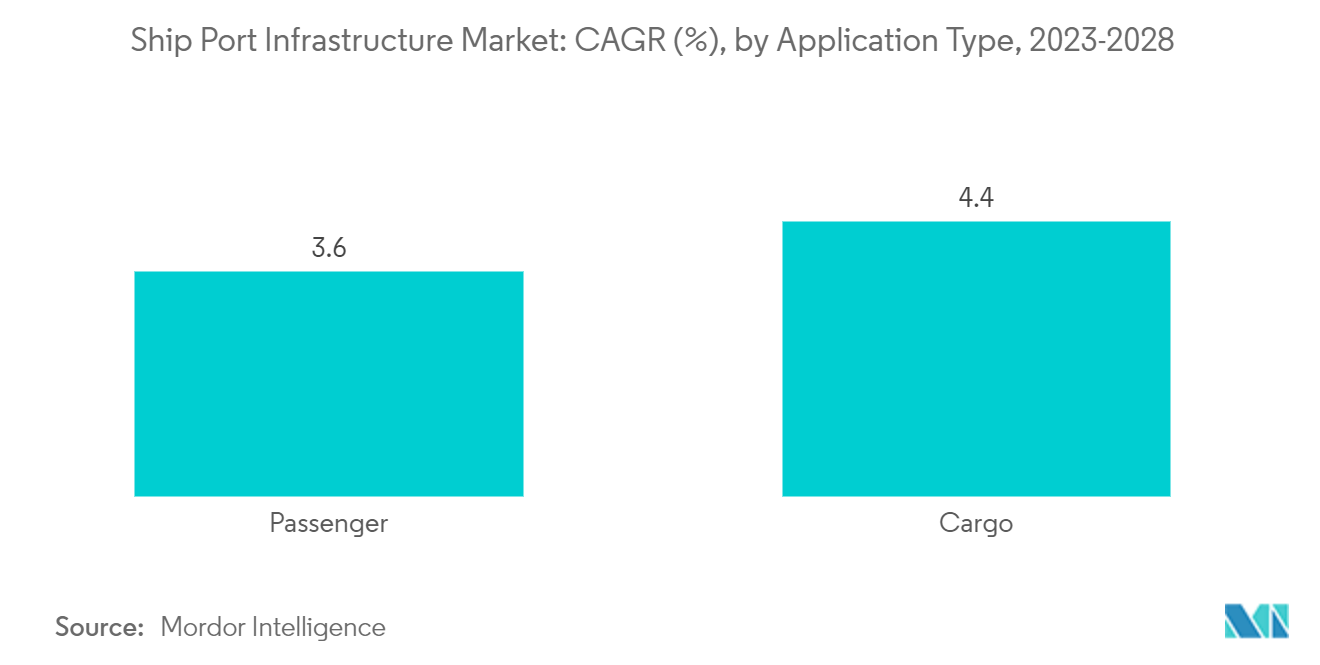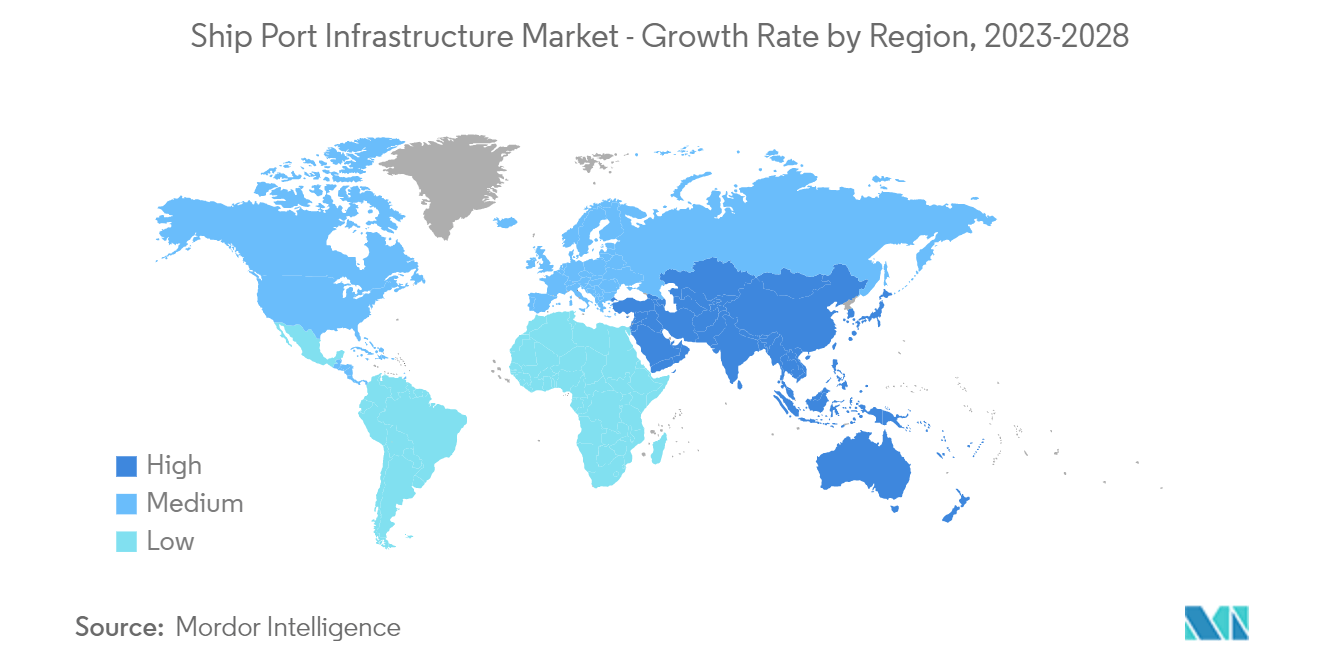Market Trends of Ship Port Infrastructure Industry
Government Initiatives for Development of Ports are Driving Growth
- Various governments across the globe are investing in ports; they are among the primary drivers of trade in the country. For instance, in July 2022, the Government of India was committed to reducing the emissions from the shipping sector and promoting the development of net zero and low-emission solutions. In February 2022, the US General Services Administration (GSA) announced major land port modernization and construction projects. The project is funded through the Bipartisan Infrastructure Law. The investment helps to improve commerce and trade activities across the country.
- In November 2021, US President Biden's Bipartisan Infrastructure Deal included an unprecedented USD 17 billion to improve infrastructure at coastal ports, inland ports and waterways, and land ports of entry along the border, recognizing the significance of American ports to the global economy. Supply chain resilience will be strengthened through long-term investments and short-term assistance provided by these resources.
- Additionally, to aid the logistics sector, many countries are inaugurating new ports to increase the inbound flow of ships and containers. For instance, in September 2021, Israel opened its new shipping port along its Mediterranean coast, which will strengthen the nation's position as a regional economic hub and introduce much-needed competition to a sector beset by delays. The Shanghai International Port Group (SIPG), which will run the 5.5 billion shekel (USD 1.7 billion) Bay Port in Haifa, will allow larger classes of cargo ships carrying 18,000 containers or more to dock in Israel.
- These initiatives and investments will increase the volume capacity of the docks, and to handle the ships, in turn, aid in constructing better infrastructure will be required. Hence this is expected to aid the ship port infrastructure market growth in the forecast period.

Asia Pacific is Expected to be the Fastest Growing Market
- The Asia-Pacific region consists of some of the fastest-growing economies in the world, like China and India. These countries' trade activities support this economic growth, and international trade takes place with marine transport.
- For instance, the marine trade of India comprises around 95% of total trade by volume and 75% by value. With other Asian and South-East Asian countries also expected to increase trade, marine transport will support this growth, and subsequently, more port infrastructure will be required for these. The Asia-Pacific region consists of some of the fastest-growing economies in the world, like China and India. This economic growth is supported by these countries' trade activities, and international trade takes place with marine transport.
- For instance, India's marine trade comprises around 95% of total trade by volume and 75% by value. With other Asian and South-East Asian countries also expected to increase trade, marine transport will support this growth, and subsequently, more port Infrastructure will be required for these nations.
- For instance, the Sri Lanka Port Authority (SLPA) is progressing with the development of facilities at Colombo Port to improve the value of Colombo Port to global shipping lines and to increase its share of the trans-shipment market.
- Additionally, many countries in the Asia-Pacific rely heavily on sea trade. Hence many of these countries are investing in technologies and infrastructure to boost the economy and use new technologies to their benefit. In June 2022, Singapore announced plans to construct the world's largest automated port by 2040. The total cost of the project at that time was USD 14 billion. The automated port is expected to feature advanced technologies such as drones and driverless vehicles to enhance its operations.
- Hence owing to the above-mentioned factors, the ship port market is expected to grow significantly in the Asia Pacific region over the coming years. e nations.
- For instance, The Sri Lanka Port Authority (SLPA) is progressing with the development of facilities at Colombo Port to improve the value of Colombo Port to global shipping lines and to increase its share of the trans-shipment market.
- Additionally, many countries in the Asia-Pacific rely heavily on sea trade. Hence many of these countries are investing in technologies and infrastructure to boost the economy and use new technologies to their benefit. For instance, in June 2022, Singapore exclaimed to construct the world's biggest automated port by 2040. As of now, the cost of the entire project is USD 14 billion. The automated port claims to have drones and driverless vehicles.
- Hence owing to the above-mentioned factors, the ship port market is expected to grow significantly in the Asia Pacific region over the coming years.


